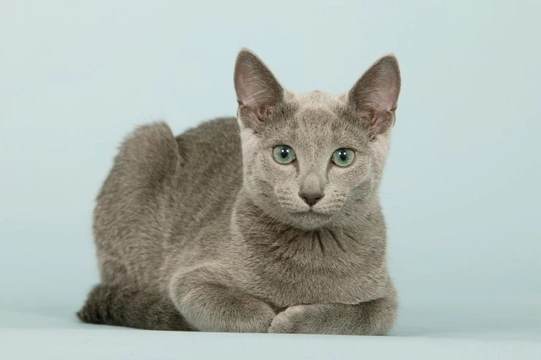
Five interesting facts about the Russian blue cat breed
The Russian blue cat breed is one of the most universally popular breeds all over the world, and of course, they are most popular in their home country of Russia. In the UK, the Russian blue is the 10th most popular breed of all based on trends and advertisement data complied over the last year, beating out our own home-grown British longhair, and other notable breeds such as the Burmese and many others!
What makes the Russian blue so appealing to so many different people is of course a very personal thing-but there is certainly a lot to be said about them in terms of their handsome appearance, lovely temperaments and soft, stroke-able fur.
If you already own a Russian blue cat, are thinking of buying one or want to find out more, in this article we will share five interesting facts about the Russian blue cat breed that you may not already know about. Read on to learn more.
Their exact origins are unknown
While the Russian blue almost certainly originated in Russia-Northern Russia, to be precise-little else is known about the breed’s origins, where the original cats that founded the breed came from, and why they became so popular!
There are a lot of different theories regarding the origins of the breed, but the most likely of these to be true is that the breed originated with small, wild grey-coloured cats that lived wild in the cold forested regions of Northern Russia. Another theory says that the breed first came to being from the pampered pet cats of the Russian Czars-although while it is a fact that czars often owned Russian blue cats, this is unlikely to be how the breed began.
Russian sailors first brought cats of the breed to the UK during the 1960’s and their port of origin-Arkhangelsk, or “Archangel” in English-actually led to one of the breed’s first names, which was the “Archangel Blue.”
They were one of the first breeds to enter the cat show world
When you are looking at a Russian blue, you instinctively know that you are looking at something rather special-you don’t see that many blue/grey cats to begin with, and the Russian blue is an elegant, regal looking feline that certainly seems to know just how good looking they are! They were in fact one of the very first cat breeds to be shown in competition, at one of the UK’s first major shows-the 1975 Crystal Palace Cat Show.
While the breed didn’t take home any notable prizes, this served to introduce them to the wider cat-loving public, and interest in and demand for cats of the breed in the UK rose exponentially from there.
They may be a good pick for people who are often allergic to cats
A small but significant number of the population are allergic to cats to some extent, which can be very disheartening for those that dream of owning a cat but feel that they are unable to do so, due to their health.
While there is no such thing as a hypoallergenic cat-despite what some breeders will tell you-some breeds and types of cats are often a better fit for people with allergies than others, such as the Russian blue, due to their low production of the Fel d 1 protein, which is the usual cause of allergic reactions to cats in humans. Additionally, they do not shed as much fur as many breeds, making them less likely to spread allergenic dander around the home.
The Russian blue is distinctive from the other blue breeds
There aren’t that many naturally grey or blue cats around in general, and only a couple of pedigree breeds that produce a blue variant-such as the British shorthair.
The colouration of any given cat is determined by the combination of genes that they inherit from their parents, and the gene that causes the blue colouration in the Russian blue is a unique one, not the same as the genes that lead to a blue colouration in other breeds.
The blue or grey fur of the breed originates from a gene that leads to black fur, but as the gene is dilute, it causes the blue or grey appearance. This can lead to some interesting colour results if you mate a Russian blue with another breed with a different colour-bred to a black cat, the litter will be a mixture of black and blue, or mated to a white cat, the litter will be a mixture of black, blue and white.
They nearly died out entirely in the 20th century
While the Russian blue is one of the most firmly established breeds internationally today, they almost didn’t make it through to the 21st century at all. World War Two and its aftermath had an acute effect on every country involved in the war, and some that weren’t-and scarcity or resources and the war effort and its recovery meant that breeding cats was the last thing on most people’s minds!
Additionally, during and immediately after the war, few people in Russia were able to afford to keep a cat when resources such as food were scarce enough for people, and so numbers of cats of the breed dropped dramatically in the middle of the 20th Century as a result.
However, efforts by many other countries including the UK meant that the Russian blue breed survived-just-by means of outcrossing the few remaining cats with other blue breeds, such as the lilac and blue point Siamese breed.



